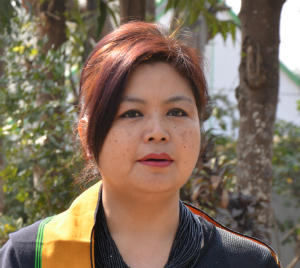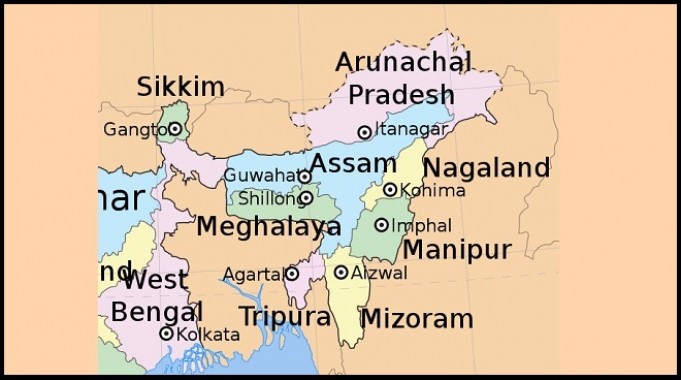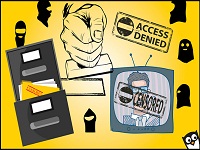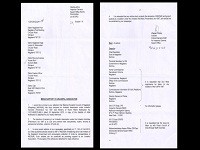The army is totally out of line
As a journalist who has covered the North East for more than two decades for television as well as edited a newspaper in Nagaland, would you describe this letter from the Assam Rifles as an unprecedented development? Has the Nagaland media been asked before, categorically, not to cover statements by a banned group?
The letter is not just an unprecedented development but a direct interference in the affairs of the fourth estate by an organisation deployed for ‘counter- insurgency’ operations. The order, addressed simultaneously to the press and the heads of the state government, can be construed as a diktat by a paramilitary force to a democratically elected government and cannot be brushed aside. India is not a military state.
Would the Assam Rifles dare extend the same order to ‘national’ media houses? The order is discriminatory in nature and reflects a poor relationship between the two entities. In over 60 years of the Indo-Naga imbroglio, the media in Nagaland has never been issued such a ‘gag’ order. If anything, this is detrimental to creating ‘normalcy’ in the state and tantamount to stating that the media has had a role in fanning militancy.
It is naïve to conclude that press releases in the media by militant outfits influence the public to support them. The Naga public is more mature in these matters than the credit given to them and besides, the topic of ‘militancy’ is far more complex in the context of Nagaland, a state created politically rather than by consensus.

Pix: Bano Haralu
The newspapers in the state are by and large regarded as neutral platforms for the public to reflect their opinion and this ‘gag’ threatens to disturb this fragile balance. Moreover, the Assam Rifles order mentions that the NSCN (K) has been declared a banned outfit to ‘’prevent and curb fresh recruitment, violent and terrorist secessionist activities and collection of funds’. It does not explain how publishing any article on the NSCN (K) negates these objectives.
What about newspapers or television in Manipur or Assam?
As far I am aware, no newspaper or television houses have ever received such orders by the Army. Even at the height of activities by the ULFA in the early 1990s, the press in Assam had the freedom to carry press releases issued by the ULFA. More often than not, it was these press releases that provided inputs for the administration on the policies being adopted by the militant outfit.
As far as television in the 90s went, Doordarshan monopolised the broadcast medium and self censorship was the rule when it came to such press releases. Very often, the operations carried out by the army in ‘busting’ ULFA hide-outs, seizure of arms, and mass surrenders often conducted by the army found regular ‘space’ in television coverage.
Interviews with ULFA leaders appeared first in the vernacular papers and later were followed up by the state and national media. The media played a significant role in Assam in stemming the growth of ULFA by providing space for free speech and opinions.
Have militant groups ever pressured media outlets in any way to carry their statements? I am told by editors in Dimapur that in this case there was no pressure from the NSCN (K) but they carried these statements because it was news. But editors in Manipur, for instance, say they feel caught between the militants and the state.
In one instance cited by the Assam Rifles regarding the publication of an appointment of an NSCN (K) cadre to oversee its trade and commercial transactions in a certain zonal area, this item was best not published by the papers. But an outfit issuing warnings to lawmakers (no names published) they deemed as ‘collaborators’ in compromising ‘Naga sovereignty’ is news, shocking as it may appear. Which newspaper house will let this pass?
If the death threat had not been picked up by the state media, it would have been covered by papers outside the state. Does that make it any less threatening? But more importantly, the statement reveals a lot about what has been happening since the Naga Peace Accord was signed by the Government of India with NSCN (IM) on August 3rd 2015, the subsequent announcement of a ban on the NSCN (K) on September 10th 2015, and the extension of the Armed Forces Special Powers Act earlier this year following the ambush and killing of 18 army jawans in the Indo-Myanmar border by the NSCN (K) in the first week of June, 2015.
Yes, there are occasions when media houses are ordered to carry statements in their entirety and sometimes told to make it headline news. Media houses have different equations, styles of functioning with militant outfits in every state.
In Manipur, the relationship between media houses and the militant groups gets a little complicated because of the plethora of ‘outfits’. But a united front of media houses under the banner of the ‘All Manipur Working Journalists Association’ has withstood threats from militants and evoked support from the public. No militant outfit or the Assam Rifles will be able to issue a similar diktat to the media in Manipur.
In this instance the NSCN (K) actually issued a threat of elimination to senior lawmakers which was carried by the press. Have there been such instances before of statements conveying death threats through the media?
The news item published in the papers on October 17, 2015 is not the first instance of ‘warnings’ issued by the insurgent groups to their alleged detractors and published in the papers.
There are individuals who are regular contributors to the dailies and who express their opinions freely on the Naga political issue. They have also been in the receiving end of such threats from the various underground outfits, the NNC, NSCN (IM), and NSCN (K). Individuals such as author Kaka Iralu, Khekiye Sema (IAS Retd), and Thepfulhouvi Solo (Retd IFS) have been targeted.
Is the army the competent authority to censor the media? Has its censorship been accepted in other parts of the North East?
The army cannot be the competent authority to censor the media. This is the first time that the army has formally issued a letter to the media directing it not to publish a news item and directly informing the state government of its diktat. The letter is being justified by stating that the Unlawful Activities Prevention Act 1967 is invoked with regard to the NSCN (K) after it was declared an unlawful association.
Requests, rather than orders to the media, work out much better, especially when the army is clearly overstepping its mandate. I don’t believe that media houses can or will refuse to publish statements from militant groups but they can exercise choice on the contents.
Do some of them have a policy on this?
I don’t know of any newspaper house or media channel that currently has a specific policy on dealing with news from militant outfits.
Bano Harulu has been a correspondent in the North East for Doordarshan and later for NDTV. She is former editor of the Eastern Mirror









